Columbia (STS-107)
In Memory
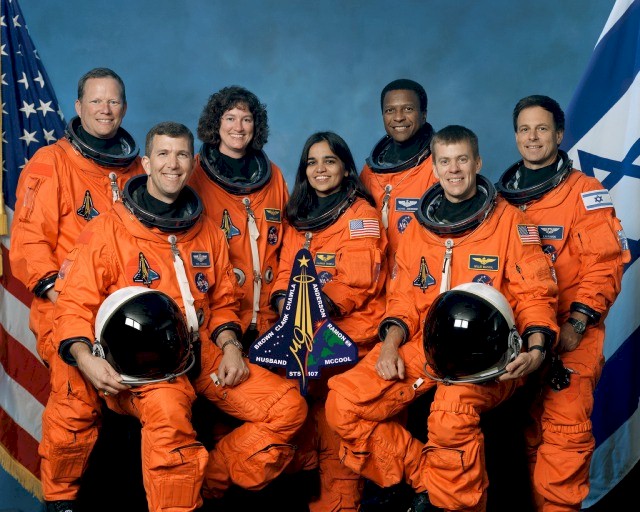 S
S
STS-107 crew
(seated, l-r) mission
commander Rick D. Husband; pilot William C. McCool
(standing, l-r): mission
specialists David M Brown; Laurel B. Clark; Kalpana Chalwa; Michael P.
Anderson;
payload specialist Ilan
Ramon (Israeli Space Agency)
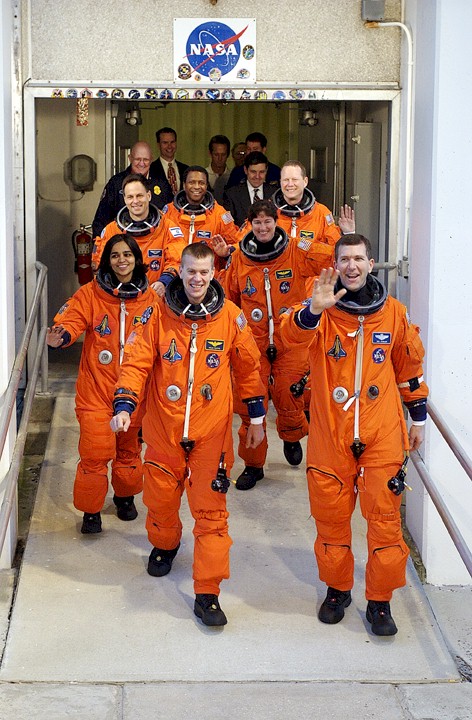
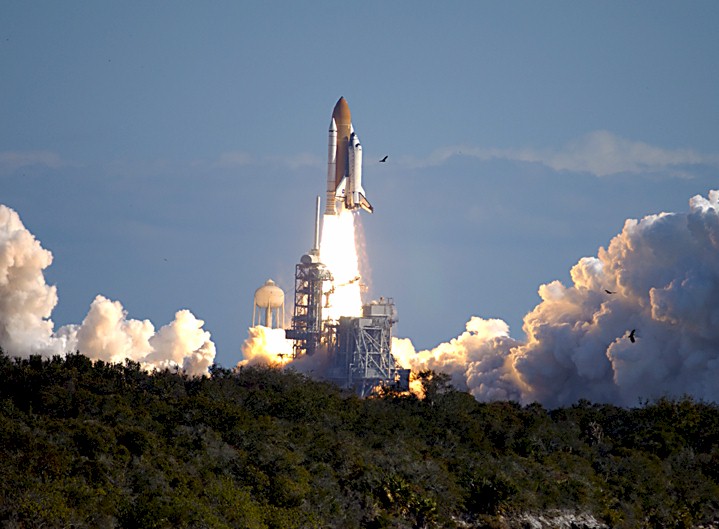
Oh, I have slipped the surly bonds
of earth and danced the skies on laughter-silvered wings; sunward I’ve
climbed, and joined the tumbling mirth of sun-split clouds – and done a
hundred things you have not dreamed of – wheeled and soared and swung high
in the sunlit silence.
Hov’ring there, I’ve chased the shouting
wind along, and flung my eager craft through footless halls of air.
Up, up the long, delirious, burning blue I’ve topped the windswept heights
with easy grace where never lark, or even eagle flew.
And while with silent, lifting mind
I’ve trod the high untrespassed sanctity of space, put out my hand, and
touched the face of God.
“High Flight”
John Gillespie Magee, Jr.
1941
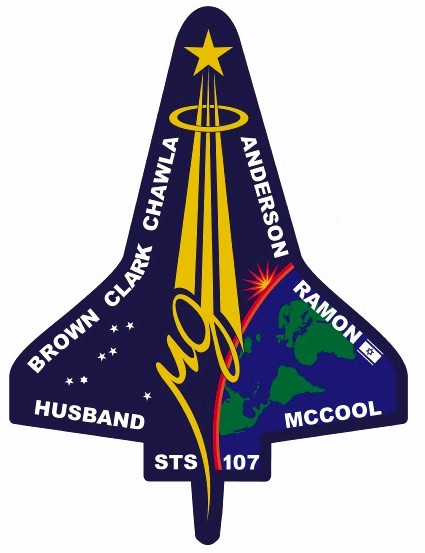
Like everyone in my generation - including
the crew of Columbia - I grew up on the Space Program. Born
in 1961, I was just old enough to remember (if not really understand) the
Apollo 1 Tragedy (1967) that claimed the lives of Gus Grissom, Ed White,
and Roger Chaffee. I remember being roused out of bed to see the
grainy black-and-white images transmitted from the Eagle at Tranquility
Base that historic July 20 in 1969. Thanks to my parents and interested
and sympathetic teachers, I'm fairly certain I saw all of the Apollo launches
and most of the missions' splash-downs on television at home or in my elementary
school classrooms. I fondly remember that each new mission sparked
the imaginations and absorbed the conversations of me and my friends.
I agonized along with the rest of the world over Apollo 13's safe return
and cheered myself hoarse when they made it back safely. I marvelled
at the color television pictures of the Lunar Rovers bounding across the
moon's surface during the latter Apollo missions.
When the decision was made to scale-back
space exploration after Apollo 17, I managed to remain interested. Skylab,
Apollo-Soyuz, the
Vikings, theVoyagers - I followed all of
them. Ah, but the Shuttle Program hooked me from the start.
I skipped work to rush out to Andrews Air Force Base to see Enterprise
piggy-backed on a 747. I followed the first few Shuttle missions
religiously. I swore that one day I'd make it down to Kennedy Space
Center to see a launch in-person. Unfortunately, as other things
preoccupied me (grad school) and as the Shuttle Program's very success
made each ensuing launch seem more mundane, like most people I began to
take the Shuttle Program for granted. The Challenger Tragedy
in 1986 wrenchingly brought my attention back to the program for a time,
but as mistakes were amended and the program once again became predictably
dependable, I drifted away. Ironically, the less I paid attention
to Shuttle missions, the more I came to depend on the work the astronauts
were doing.
As a geographer with training in remote
sensing, I used Apollo photographic imagery of the earth and satellite
imagery from the various generations of Landsat. Yet, throughout
the 90s I came to rely more and more on the quality, number, and human
touch of imagery from Shuttle missions, especially in my teaching.
I use countless images of the earth as seen from the Shuttle in Power Point
presentations to illustrate important concepts in geomorphology, climatology,
and cultural and economic geography for my students. Of course, the
temptation is to look on Shuttle mission imagery as "product" and to forget
that there is a highly-trained man or woman behind the lense of the camera,
floating in weightlessness at a Shuttle's view ports, waiting for the right
shot to pass underneath. The mission specialists aboard STS-107 were
just such men and women. As part of their mission goals, they trained
for long hours on the best digital video and still cameras and took some
stunning imagery of the earth environment (as the images below attest).
Until tragedy strikes, we tend to forget that such a seemingly simple task
as gathering images from the Shuttle platform is part of a very dangerous
job. I didn't personally know any of Columbia's crew, but
I feel a bond with all of them nonetheless. Each of the crew members
of STS-107 knew the risks they were taking, yet took the gamble and gladly
signed-on to take the greatest ride that the modern world has to offer.
Does that make them heroes? They probably wouldn't think so.
They were the best Western Civilization and American and Israeli culture
have to offer. They reached the pinnacle of achievement in their
chosen field of endeavor. They died satisfying their fondest desires,
doing what they loved. Would I have made the same choice they did?
In a heartbeat.
- David S. Hardin
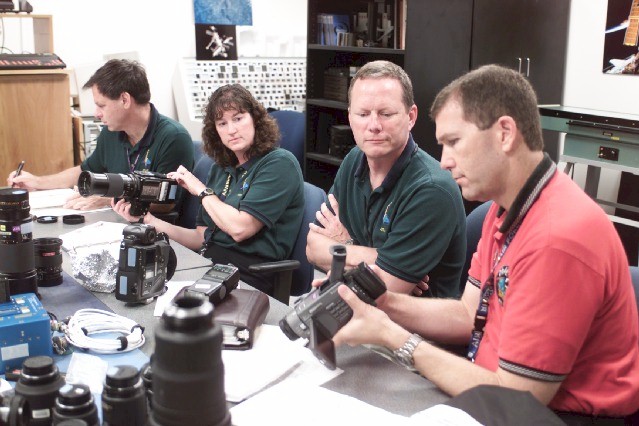
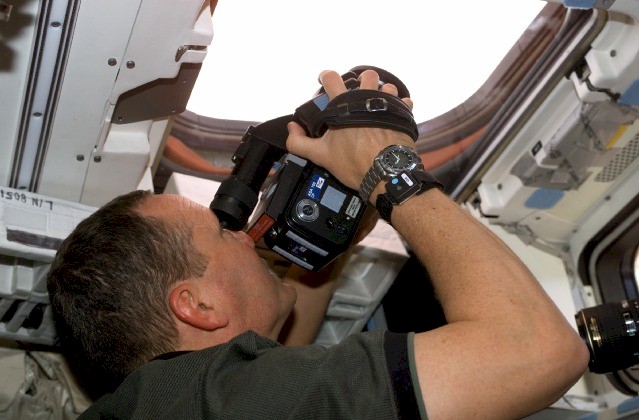
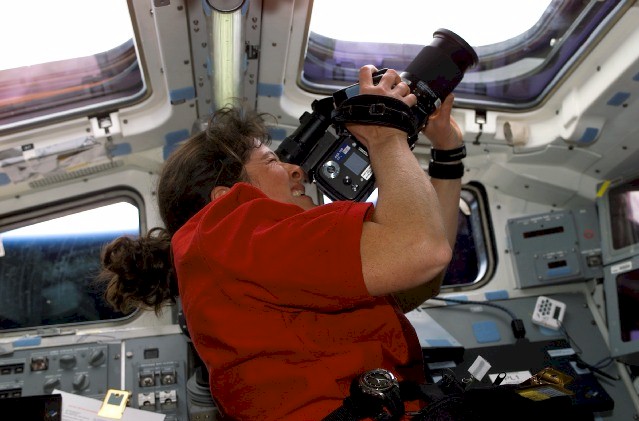
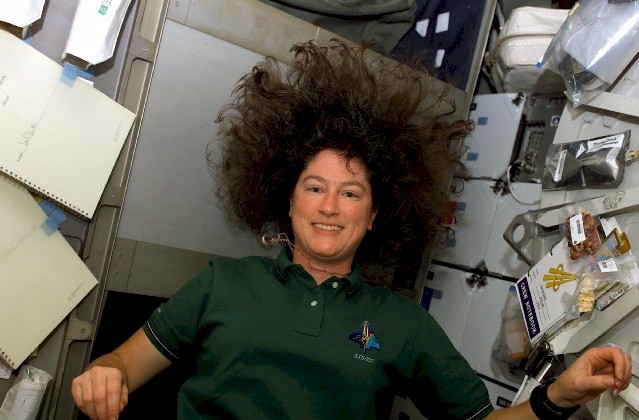
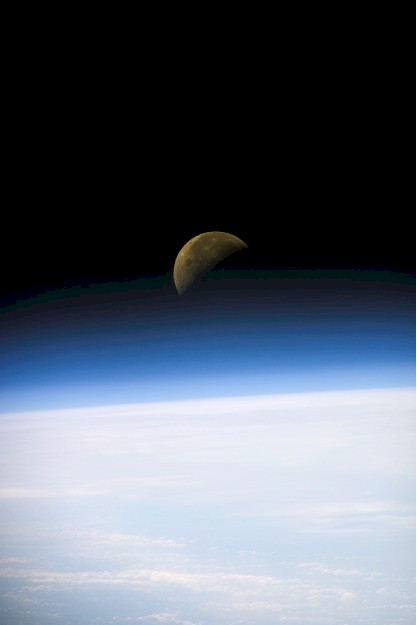
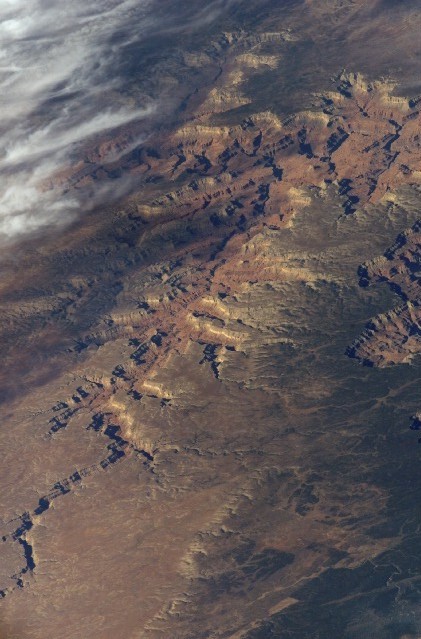
(l) Moonrise through earth's
atmosphere; (r) Grand Canyon tributary
Columbia (OV-102)
Background
Columbia, the oldest orbiter in
the Shuttle fleet and the first to fly into earth orbit in 1981, was named
after the Boston, Massachusetts-based sloop captained by American Robert
Gray. On May 11, 1792, Gray and his crew maneuvered the Columbia
past the dangerous sandbar at the mouth of a river extending more than
1,000 miles through what is today south-eastern British Columbia, Canada,
and the Washington-Oregon border; the river was later named after the ship.
Gray also led Columbia and its crew on the first American circumnavigation
of the globe. Other sailing ships have further enhanced the luster
of the name Columbia: the first U.S. Navy ship to circle
the globe bore that title, as did the command module for the first lunar
landing mission, Apollo 11. "Columbia" was the name applied to the
feminine personification of the United States and was derived from that
of another famous explorer, Christopher Columbus. In the day-to-day
world of official Shuttle operations, Space Shuttle orbiters go by more
prosaic designations; Columbia was commonly refered to as OV-102,
for Orbiter Vehicle-102.
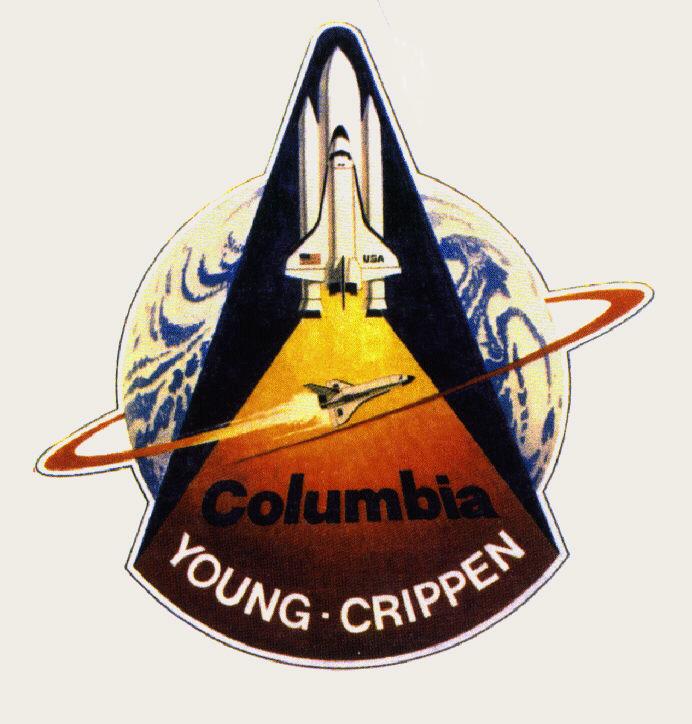

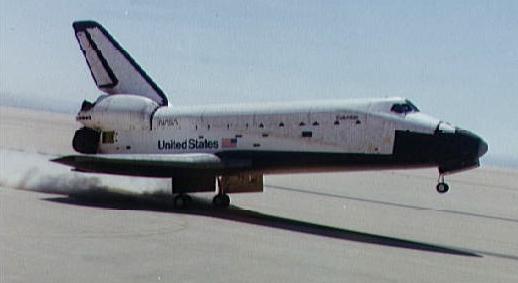
STS-1
April 12-14, 1981
Upgrades and Features
Columbia was the first on-line orbiter
to undergo the scheduled inspection and retrofit program. After it completed
mission STS-40, it was transported on August 10, 1991 to Shuttle contractor
Rockwell International's Palmdale, California assembly plant. The oldest
orbiter in the fleet underwent approximately 50 modifications, including
the addition of carbon brakes, drag chute, improved nose wheel steering,
removal of development flight instrumentation, and an enhancement of its
thermal protection system. The orbiter returned to Kennedy Space Center
on February 9, 1992 to begin preparing for mission STS-50 in June of that
year. On October 8, 1994, Columbia once again was transported
to Palmdale California for its first Orbiter Maintenance Down Period (OMDP).
On September 24, 1999, Columbia returned to Palmdale California
for its second OMDP, during which workers performed more than 100 modifications
on the vehicle. Columbia was the second orbiter outfitted
with the multi-functional electronic display system (MEDS) or "glass cockpit".
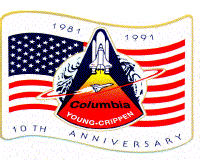
Disintegration of Columbia
During Reentry
Saturday, February 1,
2003
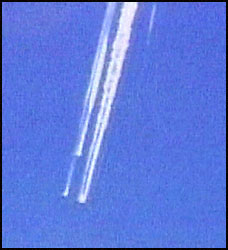
Courtesy HO-Reuters
Shreveport, LA doppler radar
images
Radar out of Shreveport,
Louisiana caught Columbia's debris cloud as it crossed the Texas-Louisiana
border. On this animated radar loop (l), the debris appears as a
light blue streak between the labels for Nacogdoches, TX and Natchitoches,
LA. The local radar image for Shreveport (r) clearly shows the extent
of the debris cloud from Columbia between Tyler, TX and Alexandria,
LA
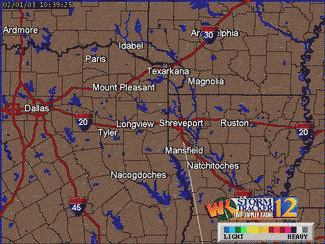
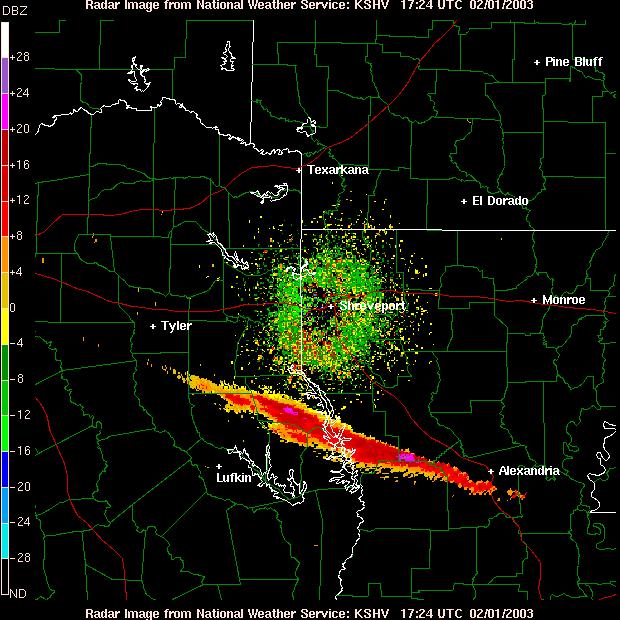
 S
S











